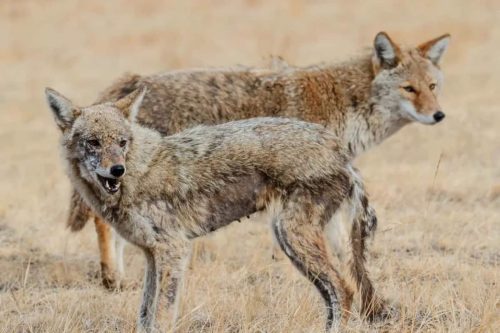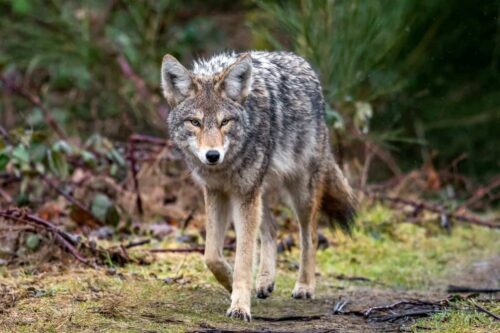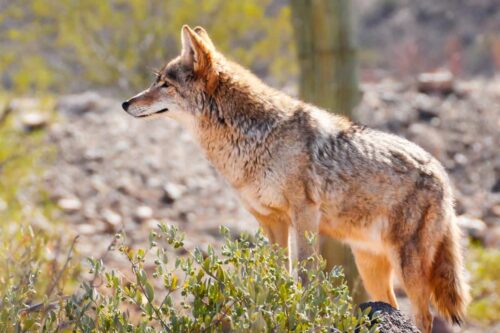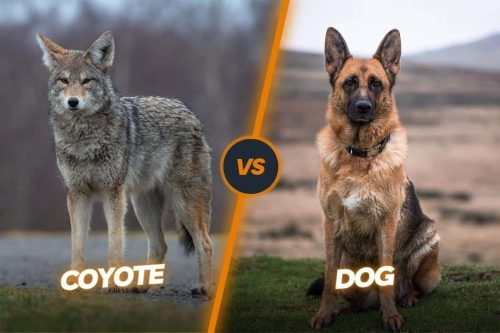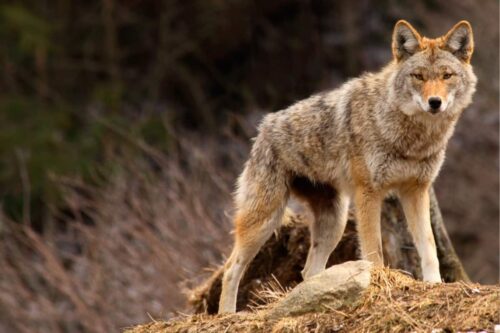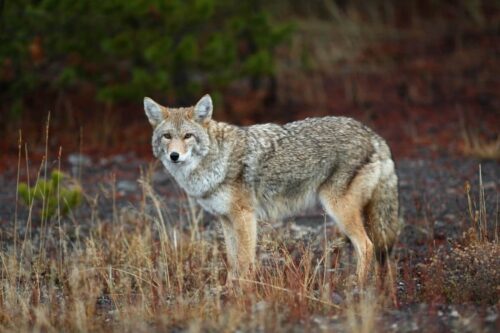Are Coyotes Nocturnal Or Diurnal? When Are They Most Active?
Although coyotes are integral to the North American environment, we sometimes find them strange due to their nocturnal lifestyle. This blog article will study coyotes’ typical routines and habits and the mysteries surrounding their nighttime activities. You will get an answer to the question, are Coyotes Nocturnal? You will better know coyotes’ evasiveness and what they do after the sun sets after this article. So let’s begin our investigation into the enigmatic coyote by looking at what causes them to be active at night.
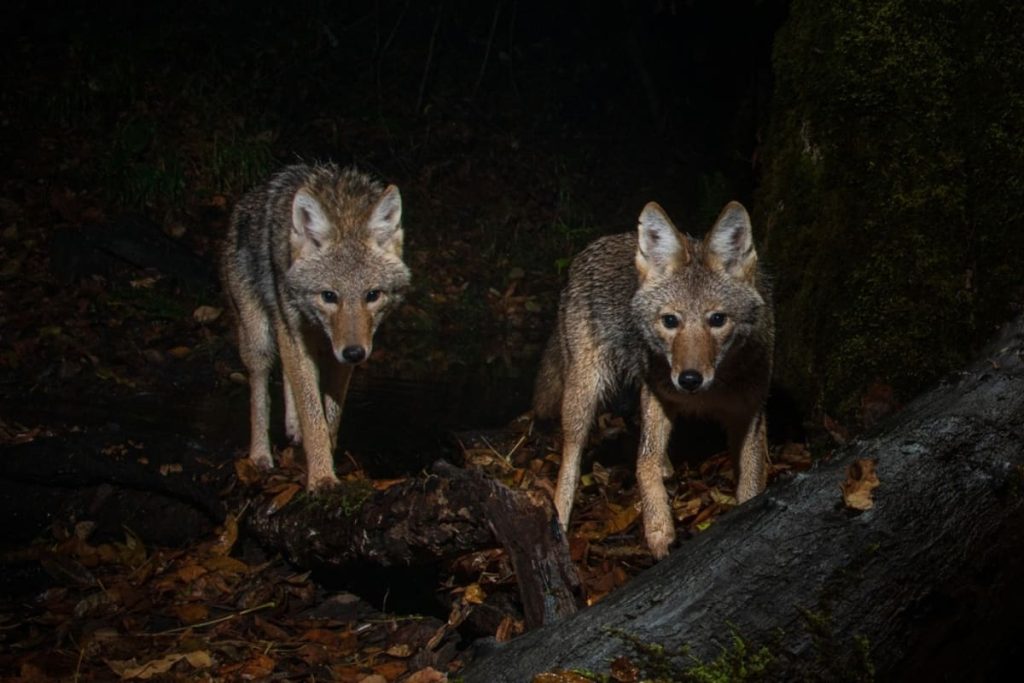
Contents
- Understanding the Nighttime Behavior of Coyotes
- Diurnal vs. Nocturnal Animals
- Coyote Nighttime Activity Patterns
- Coyote Nighttime Activity: Contributing Factors
- Coyote Hunting and Feeding Habits at Night
- Coyote Nighttime Vision and Color Recognition Attributes
- How Coyote Reacts to Various Colors at Night?
- Communication Styles and Vocalization of Night Coyotes
- Coyote Nighttime Habits of Denning
- Coyotes and People Interacting at Night
- Final Thoughts
- FAQs
Understanding the Nighttime Behavior of Coyotes
Most coyotes are known to be nocturnal, which means they are active at night and rest during the day. That is the answer to your question, are Coyotes Nocturnal? Thanks to their adaptability, they have learned to avoid human interaction by avoiding sunshine. They can move around without being spotted readily at night, making hunting and scavenging for food safer.
If you are still wondering when are coyotes most active, the answer is nighttime. Coyotes can thrive in various night habitats because they have evolved to become proficient hunters and scavengers. However, they can modify their nocturnal habits based on different circumstances, including the weather, human activity, and food availability. Coyote nocturnal activity patterns can help us better understand their routines and our capacity to cohabit with them. For instance, what time of day are coyotes most active, etc?
Diurnal vs. Nocturnal Animals
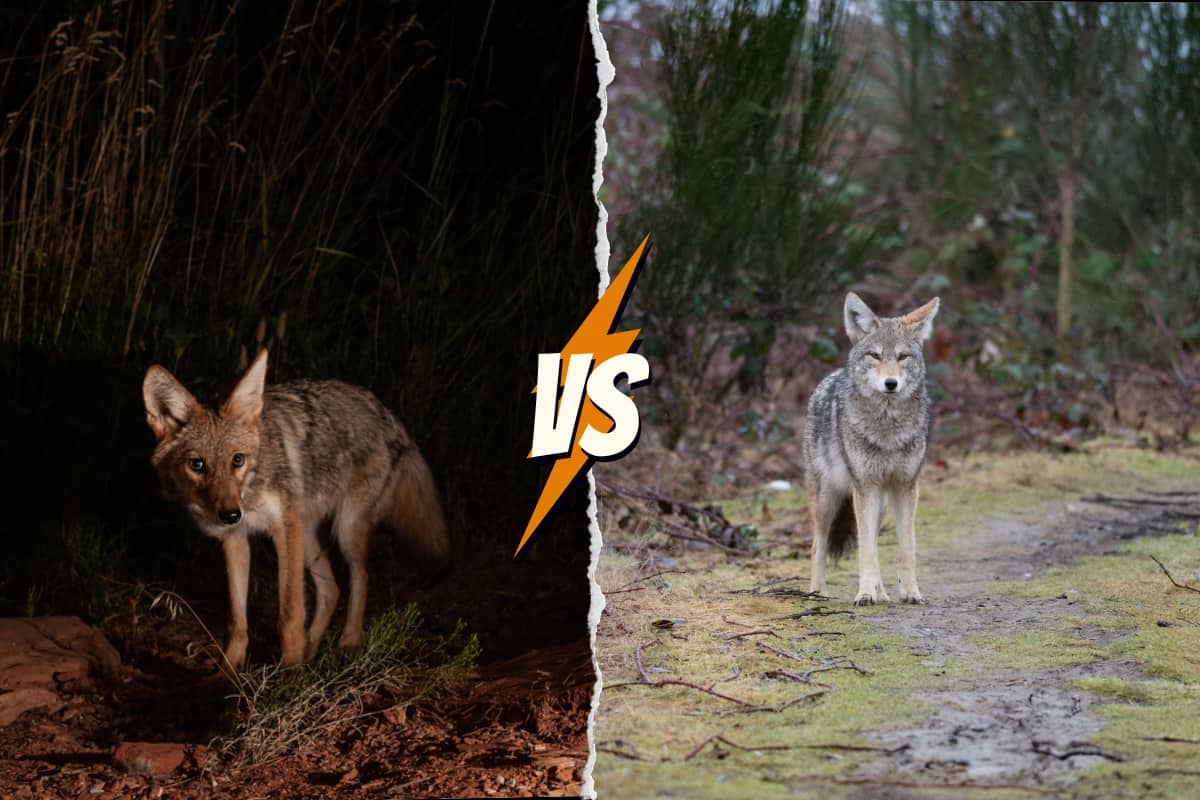
Aside from the debate of whether Coyotes are nocturnal, the thing of interest for many people is the nature of other animals in this regard. Animals can be divided into two categories according to their daily routines: nocturnal and diurnal. Diurnal animals are those that are active during the day, and nocturnal animals are those that are active at night. Coyotes are considered nocturnal creatures since they often hunt, forage, and roam around at night.
Conversely, nocturnal animals have adjusted to daylight behaviors, including prey hunting, mating, and basking. They use their acute eyesight for daytime navigation. Humans, lions, and squirrels are a few examples of diurnal creatures.
Animals have changed over time to blend in with their surroundings. They thus create specific activity patterns that best meet their demands for survival. Planning activities like hunting or photography requires knowing if an animal is nocturnal or diurnal. Understanding an animal’s behavior enables one to recognize and value its special survival abilities. It will also help you know whether coyotes can see in the dark. And also why it is essential for their nocturnal lifestyle.
Coyote Nighttime Activity Patterns
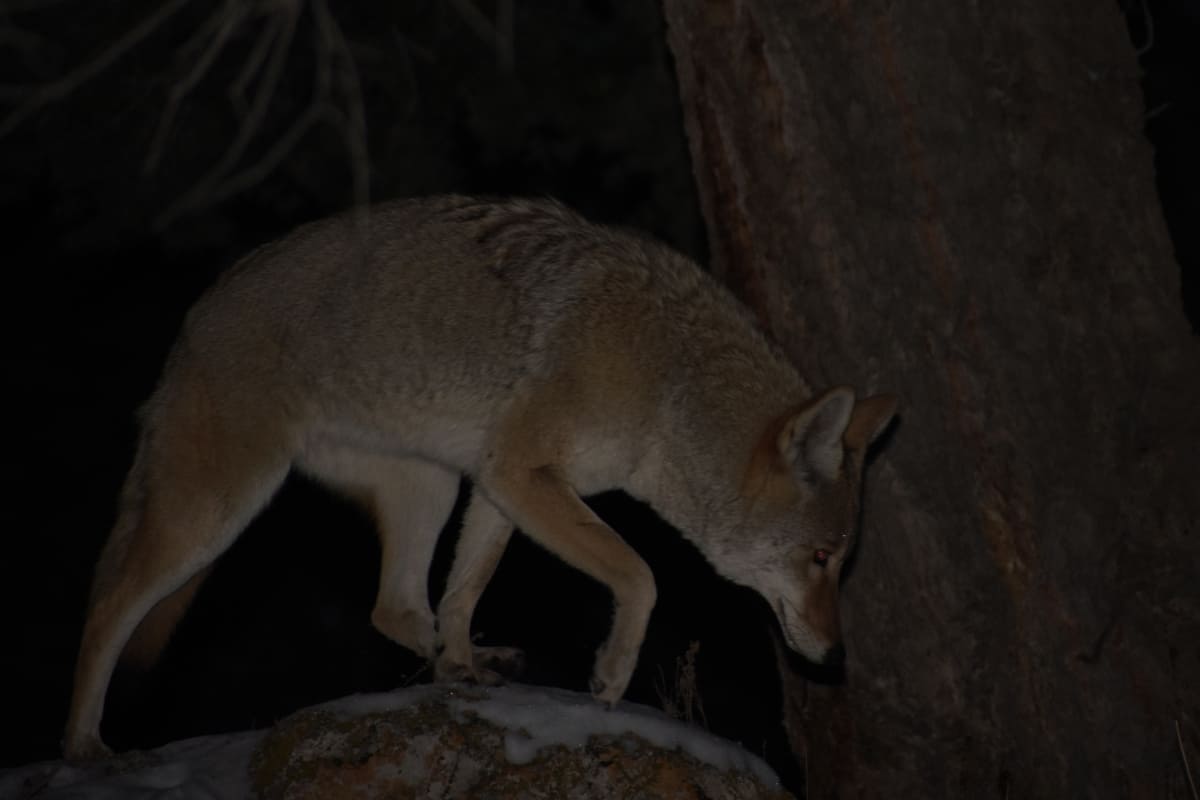
Coyotes are primarily active at night because of their well-known nocturnal activity habits. Coyotes are more frequently spotted in the late afternoon and early evening since they are less active and sleepy during the day. However, these creatures become pretty busy at night when they travel for food, mates, and to explore their lands. All that most eminently depends upon the facts associated with coyote eyes in the dark. Their eyes are specially designed to see in the dark. They can even see colors that we cannot see in darkness.
Some people ask if coyotes can see a green light. Well, they can see it well enough. The nocturnal lifestyle makes them capable of seeing many such colors.
Coyotes often spend most evenings moving about their areas while looking for food. They can cover a lot of ground in a single night. They are opportunistic hunters and feeders, consuming a wide range of food, including rabbits, rodents, birds, and occasionally even small deer. In conclusion, the most fantastic time to see coyotes in the wild is at night, when they are known to be very active animals.
Coyote Nighttime Activity: Contributing Factors
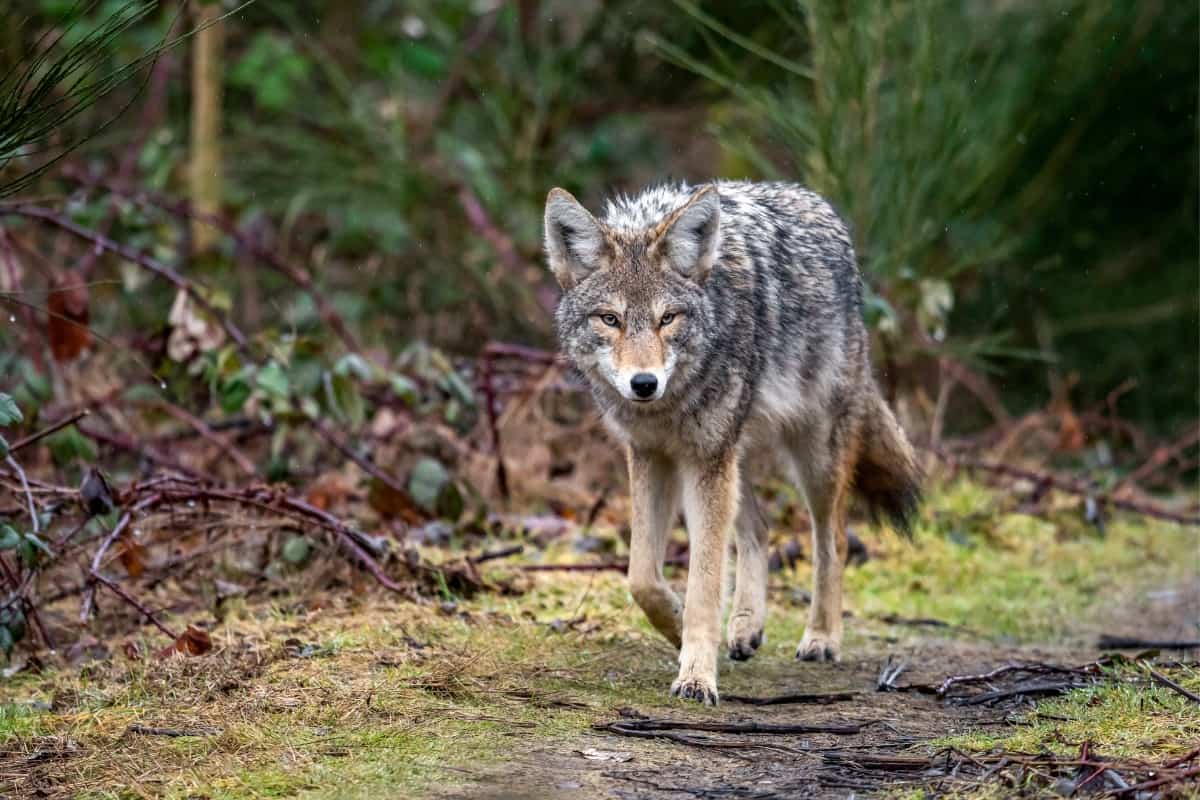
Coyotes are adaptive animals that may change their behavior based on various circumstances. You shall be satisfied regarding what time of day are coyotes most active. Their innate need to be away from people is the main element that influences their day or nighttime activities. Coyotes are naturally cautious of people and are more active at night to avoid coming into contact with them. So it does not mean they would not be visible during the day.
Their dietary sources also have an impact on their nighttime activities. Rats, rabbits, and deer are just a few creatures coyotes may eat since they are opportunistic predators. Coyotes may need to modify their activity patterns to better suit these prey species’ nocturnal activities to maximize their chances of obtaining prey. That is why we cannot predict when are coyotes most active.
Coyote activity may also vary depending on the weather; for example, it may be higher during cooler evenings and lower during hot summer nights. Coyote activity can also be affected by the mating season since they are often more active between January and March when reproducing. The ability to cohabit with these clever and intriguing creatures depends on our ability to comprehend the elements influencing coyote nighttime activity.
Coyote Hunting and Feeding Habits at Night
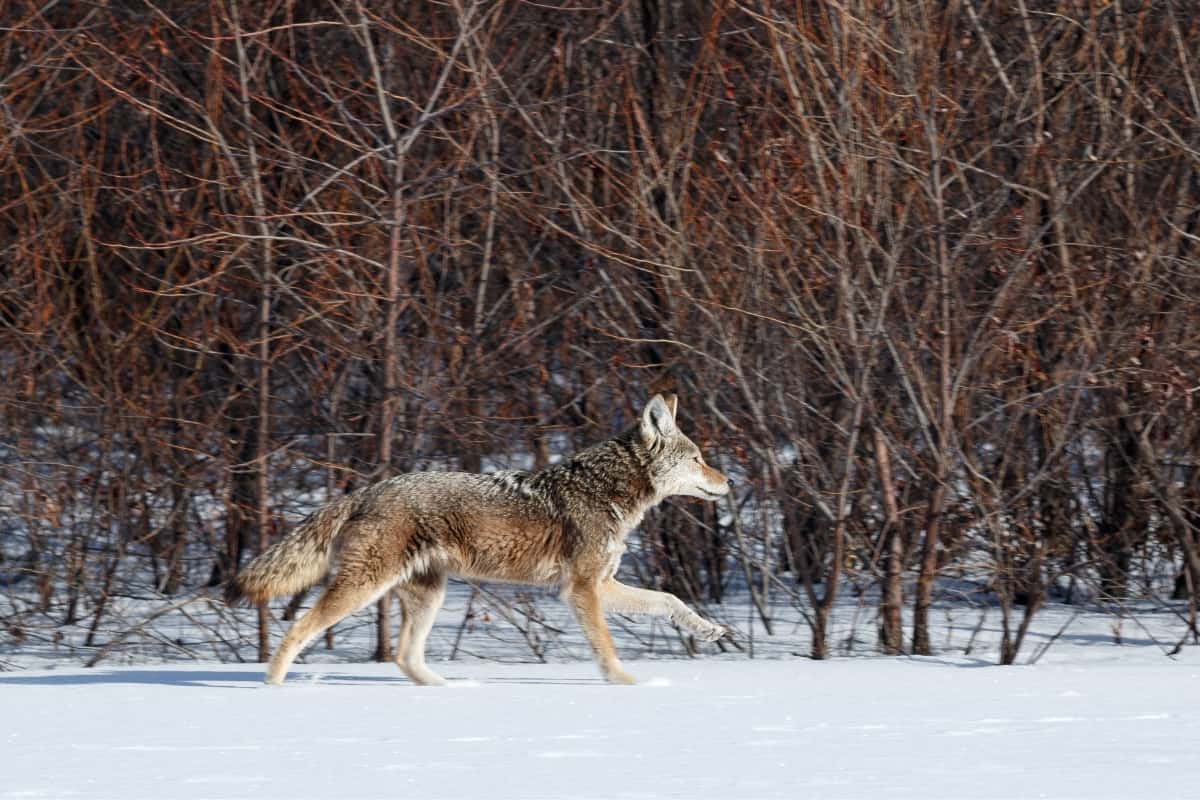
Coyotes are opportunistic eaters, and the seasons affect their hunting and eating. In winters coyotes become more active and chase more giant animals like deer as food is limited. However, for the remainder of the year, small animals like mice and rabbits and occasionally birds, insects, and reptiles make up most of their diet. All that can also answer why and when coyotes come out during the day.
Coyotes stalk and chase their prey while using various other hunting strategies when they hunt in couples or small groups. They pursue success even in low light thanks to their great hearing, smelling senses, and exceptional night vision.
Coyotes have been known to raid residential garbage cans and compost piles while scavenging for food. They are highly adaptive creatures that can get by on various foods. They are effective predators and can adapt to shifting surroundings thanks to their nocturnal hunting and feeding activity.
Coyote Nighttime Vision and Color Recognition Attributes
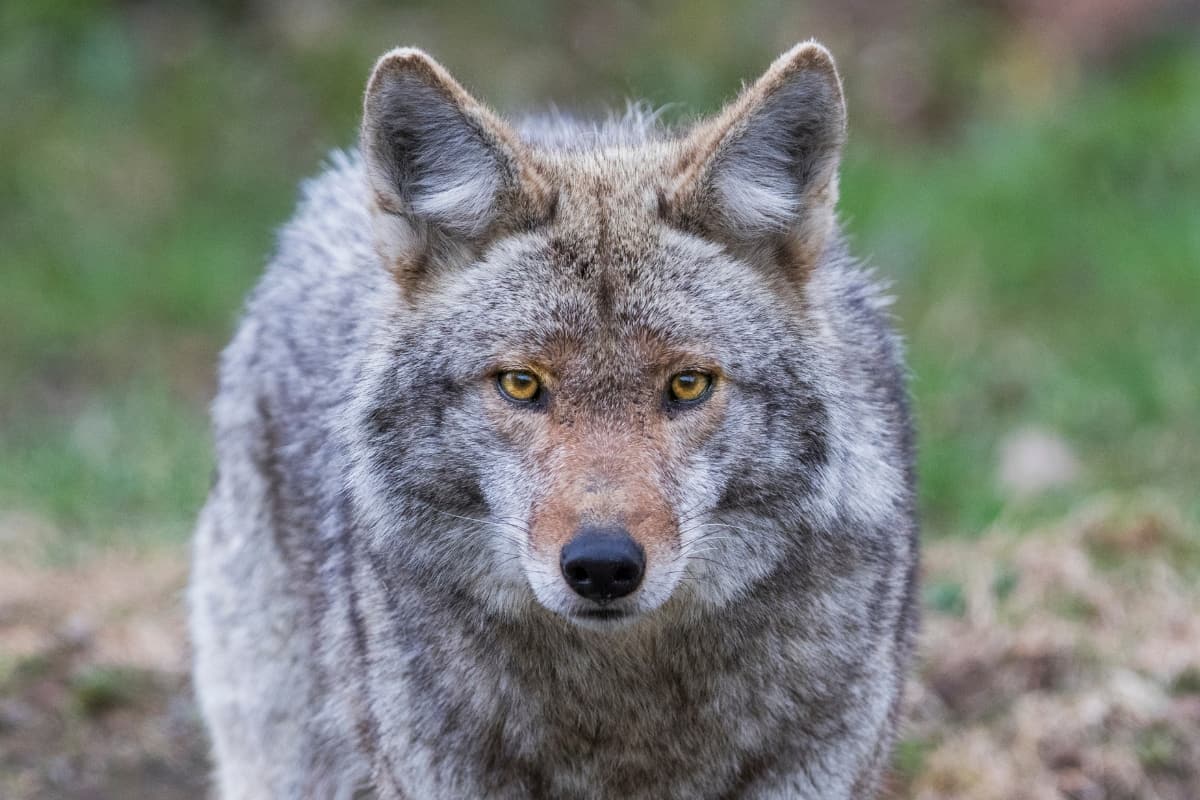
The coyote’s night vision reveals a fantastic adaption to their nocturnal lifestyle. Their well-adapted eyes for dim lighting provide an enthralling sight on a starry night. Although coyotes have good night vision, they are not as sensitive to some colors as people are.
Coyotes have limited color vision, unlike people, who can see various colors. According to research, they have a dichromatic vision and see the world mostly in blue and green tones. This indicates that although they have limited color vision compared to humans, they can see the green light. However, they have trouble telling red from green because they lack the cones to recognize red in their eyes. Red light, therefore, appears to them as a hue of grey or brown. Here are some color attributes of Coyotes.
How Coyote Reacts to Various Colors at Night?
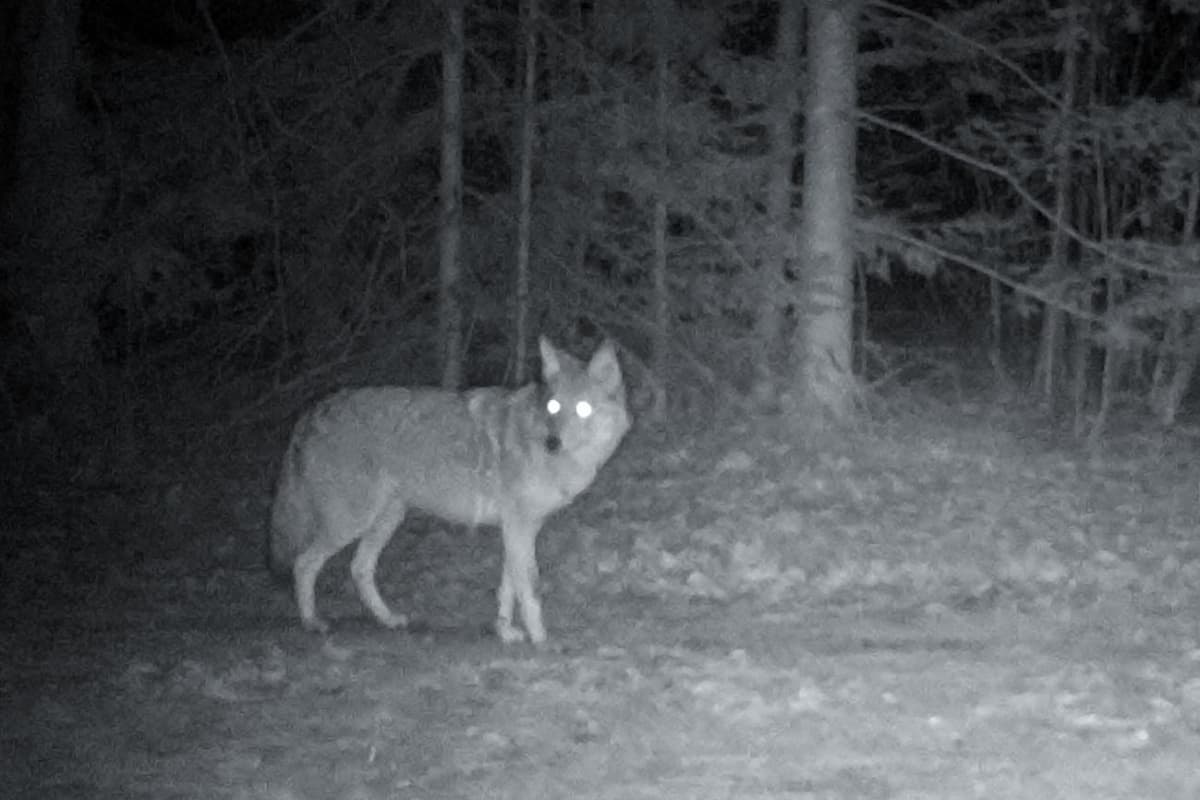
It’s interesting to note that coyotes have a diminished capacity to perceive colors like orange. Due to their unique eye modifications, some colors may seem flat or less distinct to them. They have the most difficulty seeing or perceiving red-orange colors appropriately.
Coyote eyes have a haunting beauty at night. It’s common to describe their eyes as having a seductive greenish-yellow hue that reflects a brilliant radiance. The tapetum lucidum, a layer of tissue, is responsible for this reflecting quality, also known as eyeshine, which improves night vision. The tapetum lucidum reflects light that is accessible, enhancing their night vision.
Coyotes can travel through the night very quickly because of their vision, although they have a poor understanding of color. Their brilliant eyes are seen in the dark, but their color vision is better tuned for blue and green tones than the vivid human color spectrum.
Communication Styles and Vocalization of Night Coyotes
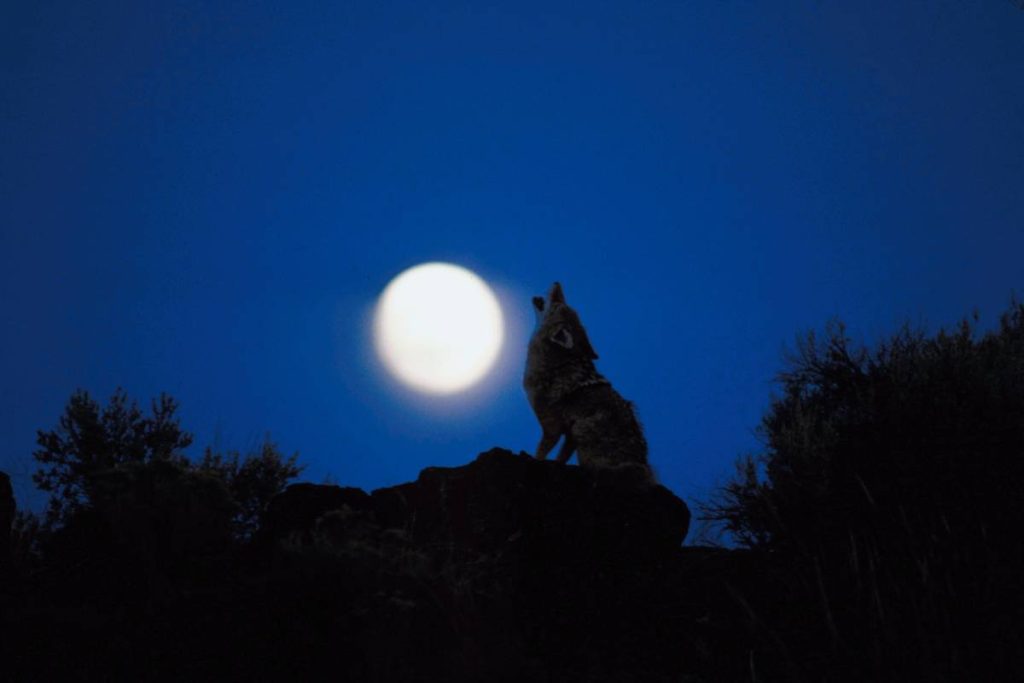
The variety of vocalizations coyotes make at night, to communicate with one another, is well recognized. They yip, growl, howl, and bark as forms of communication. Coyotes are more noisy and aggressive at night when they are more active. As a means of establishing territories, identifying other pack members, and warning of possible danger, their howling is frequently audible in the dark and morning. Coyotes frequently yip and bark when hunting and produce a range of noises when they’re in trouble.
Specialists may use coyote vocalizations to interpret social behavior, receptive behavior, and stress levels. Remembering coyote communication may not necessarily portend a danger to people is crucial. Therefore, deciphering their vocalizations is essential to comprehend their behavior and live in peace with them.
Coyote Nighttime Habits of Denning
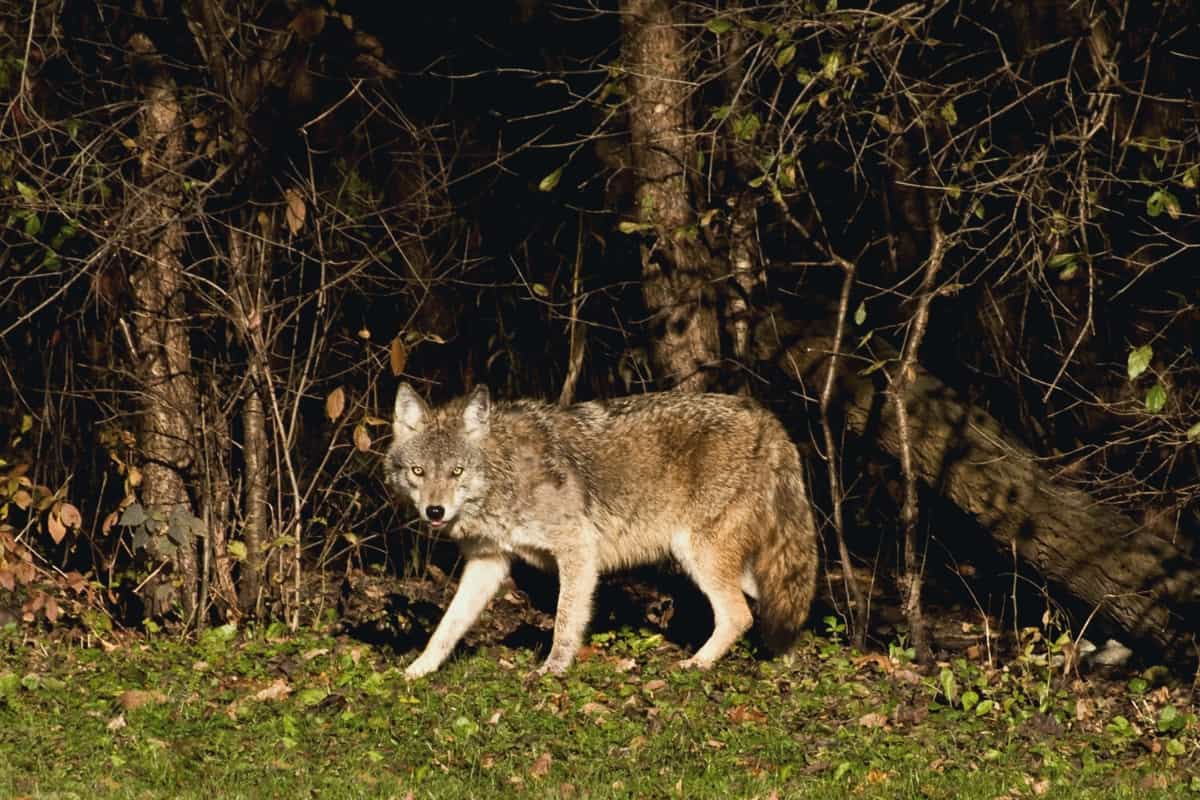
Coyotes are well-known for being clever and adaptable creatures, capable of changing their behavior in response to their surroundings and food availability. Their denning behavior is one of their typical behaviors essential to their survival and reproductive success.
Coyotes are frequently nocturnal, meaning they are active at night when they usually den. These dens provide a place for the animals to relax, hide from danger, and rear their young. The holes might be artificial constructions like drainage pipes beneath sheds and decks or natural forms like hollow logs, abandoned caves, and rocky outcroppings.
Coyotes grow more aggressive and dependent on their denning behavior during the breeding season. The puppies are born blind and defenseless, and the female coyote usually gives birth in April or May. She tends to her pups until they are healthy enough to leave the den by nursing and caring for them there. Coyotes are already enigmatic, and their nighttime denning habits make them much harder to identify and more elusive.
Coyotes and People Interacting at Night
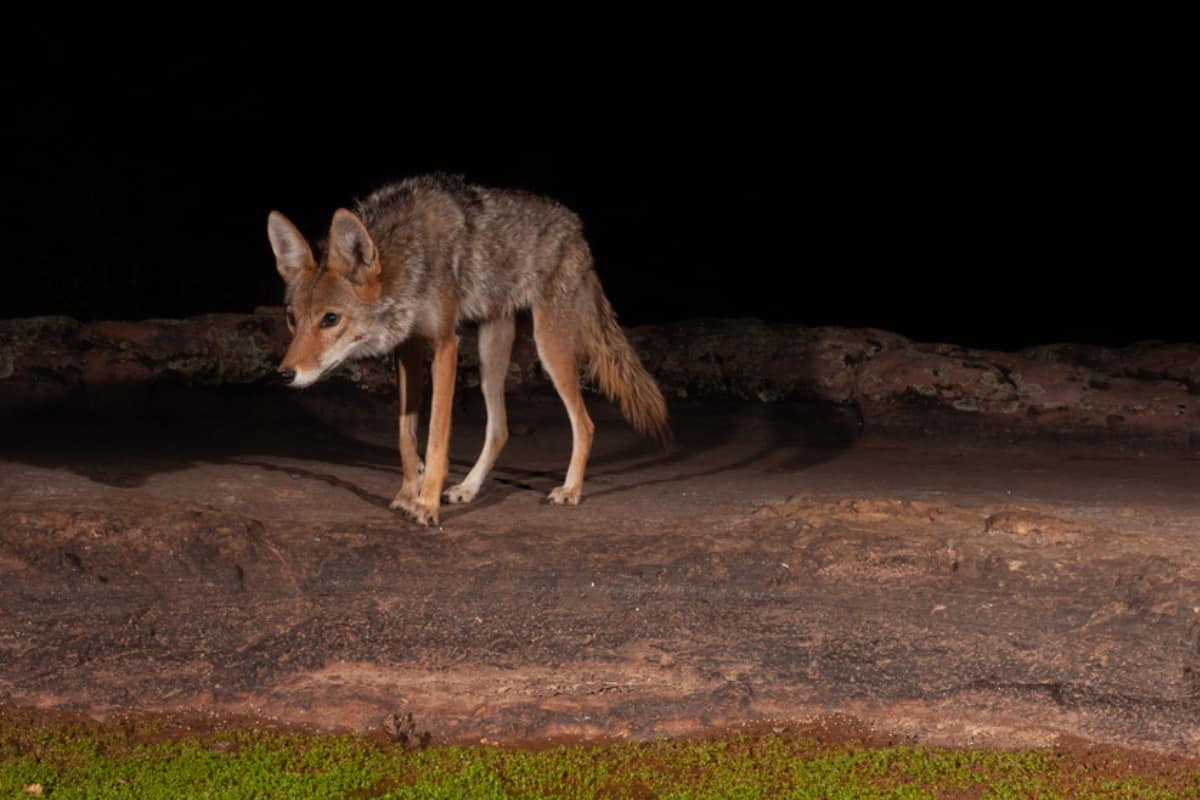
Coyote encounters with people at night may be exciting but also possibly dangerous. Coyotes are nocturnal animals. Thus encounters are more probable at night since they are more active after sunset. Although some people might find the notion exciting, prudence is necessary. Coyotes are typically cautious of people, but if confronted or trapped, they may become aggressive. It is best to keep your distance and refrain from feeding or tempting them. Secure garbage cans and reduce attractants to stop them from assembling close to residential areas. Maintain eye contact, make noise, and gently retreat if you are met. Coexistence between people and these elusive animals may be more peaceful by comprehending and appreciating coyotes’ natural behavior.
Final Thoughts
As is clear from the above discussion, Coyotes are more active at night rather than daytime. It provides a clear answer to the question, are Coyotes Nocturnal? They just come out of their den at night in search of animals that are only active at night. Prey is the main reason for them to be active at night. Second, they are shy from humans and would not face them often. That is why they do not come out in day time.
FAQs

Ray is an experienced wildlife researcher with a background in veterinary medicine. His contributions have significantly advanced our understanding of various wild animals.

